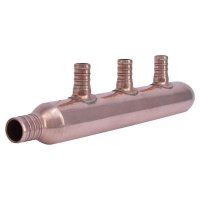PumpNewb1
New Member
Hi All -
Recently, I installed a Aquasana system at the entrance of my well system (1550 Sq Ft Cape/1963). It came out good but I used PEX 3/4" with a crimp system. The rest of my run is 3/4 copper before breaking up into 1/2 other fixtures.
Honestly, I never really run more then 1 fixture at once because of well water but after watching a bunch of you Pros (YouTube) everyone pretty much universally says go with Uponor (Pex A) expansion system because it doesn't reduce water flow. I cherish my water flow and have to replace a long 3/4 run into the joists because I am refinishing the basement and want to sheetrock (low ceilings so can't go down).
My question: Does Crimp Rings really reduce water flow that noticeably? If in belief it does I literally will buy a expansion kit and redo my Aquauna and run the new PEX with it too.
I really appreciate your time.
Recently, I installed a Aquasana system at the entrance of my well system (1550 Sq Ft Cape/1963). It came out good but I used PEX 3/4" with a crimp system. The rest of my run is 3/4 copper before breaking up into 1/2 other fixtures.
Honestly, I never really run more then 1 fixture at once because of well water but after watching a bunch of you Pros (YouTube) everyone pretty much universally says go with Uponor (Pex A) expansion system because it doesn't reduce water flow. I cherish my water flow and have to replace a long 3/4 run into the joists because I am refinishing the basement and want to sheetrock (low ceilings so can't go down).
My question: Does Crimp Rings really reduce water flow that noticeably? If in belief it does I literally will buy a expansion kit and redo my Aquauna and run the new PEX with it too.
I really appreciate your time.

